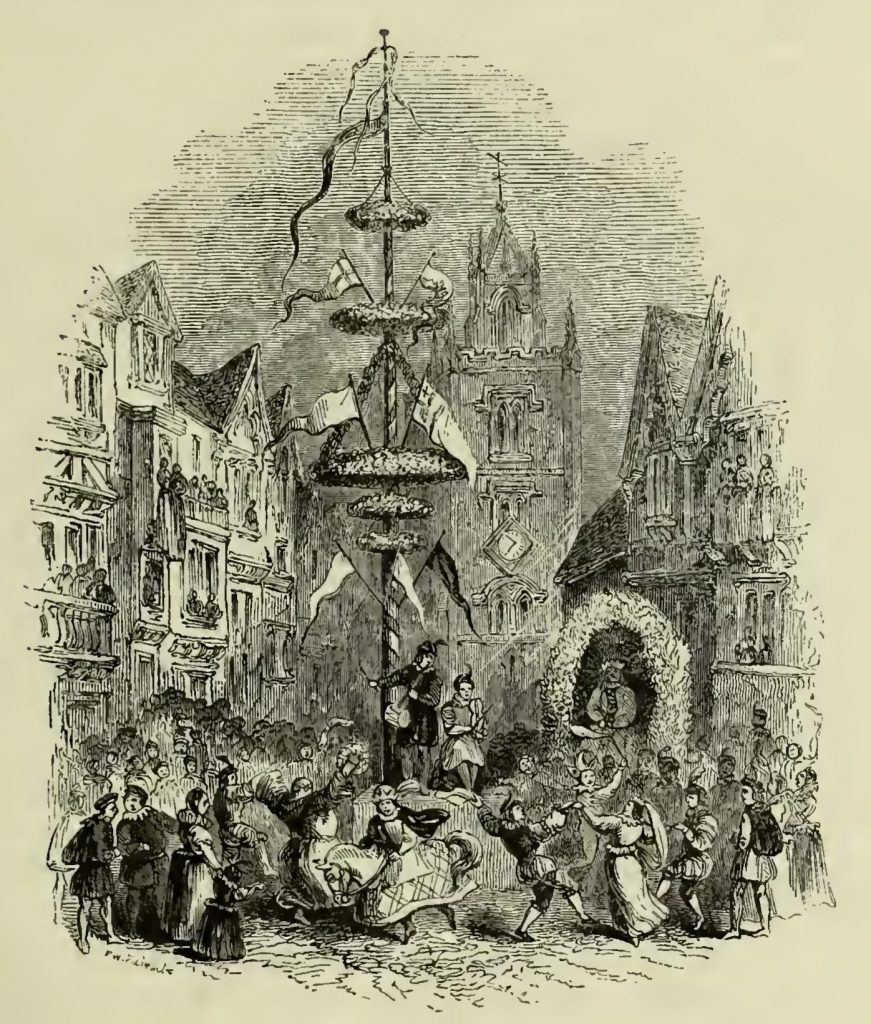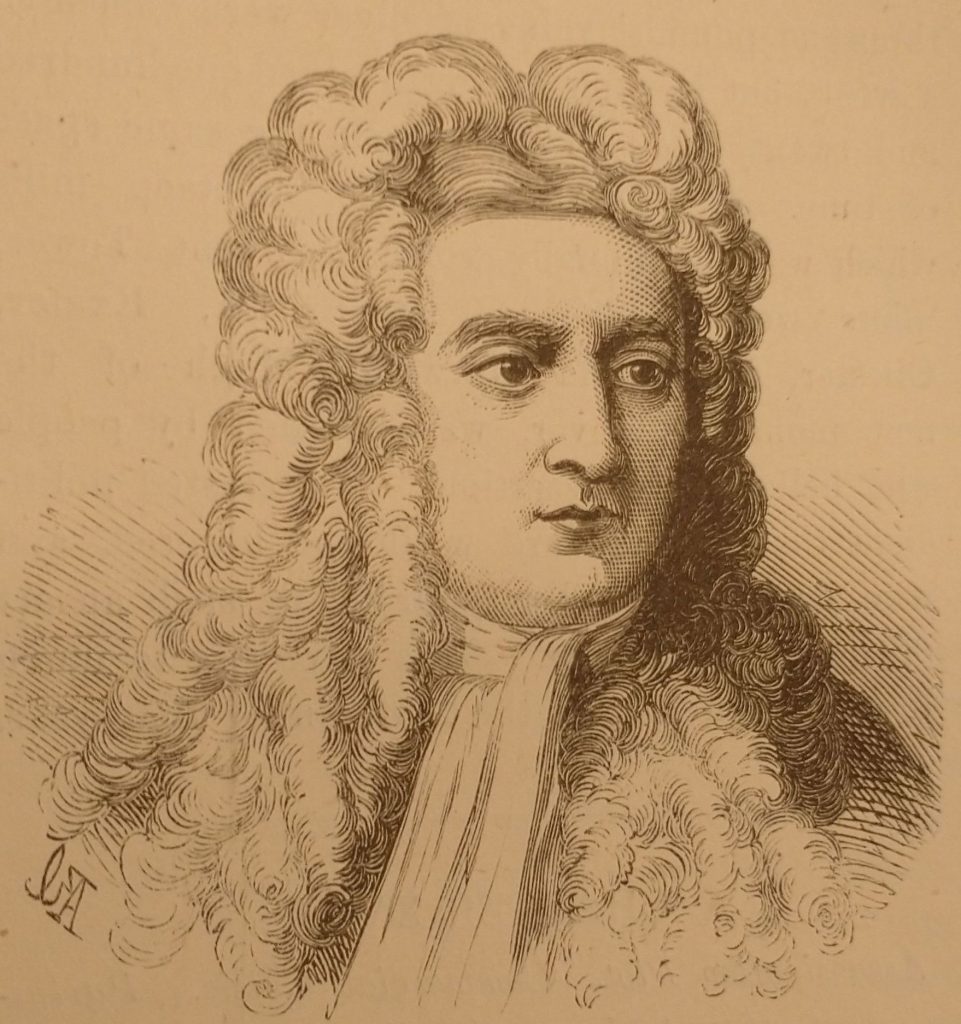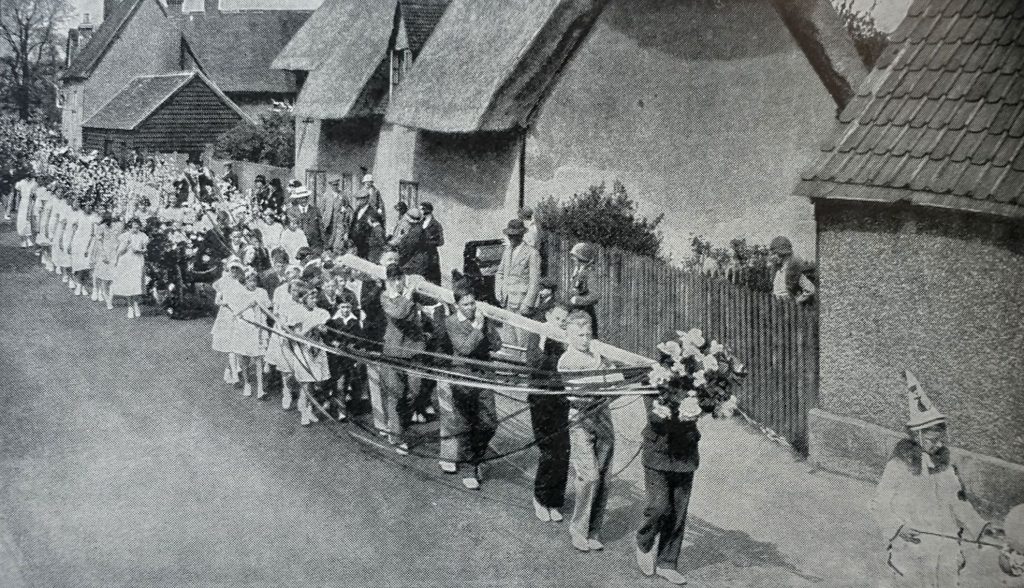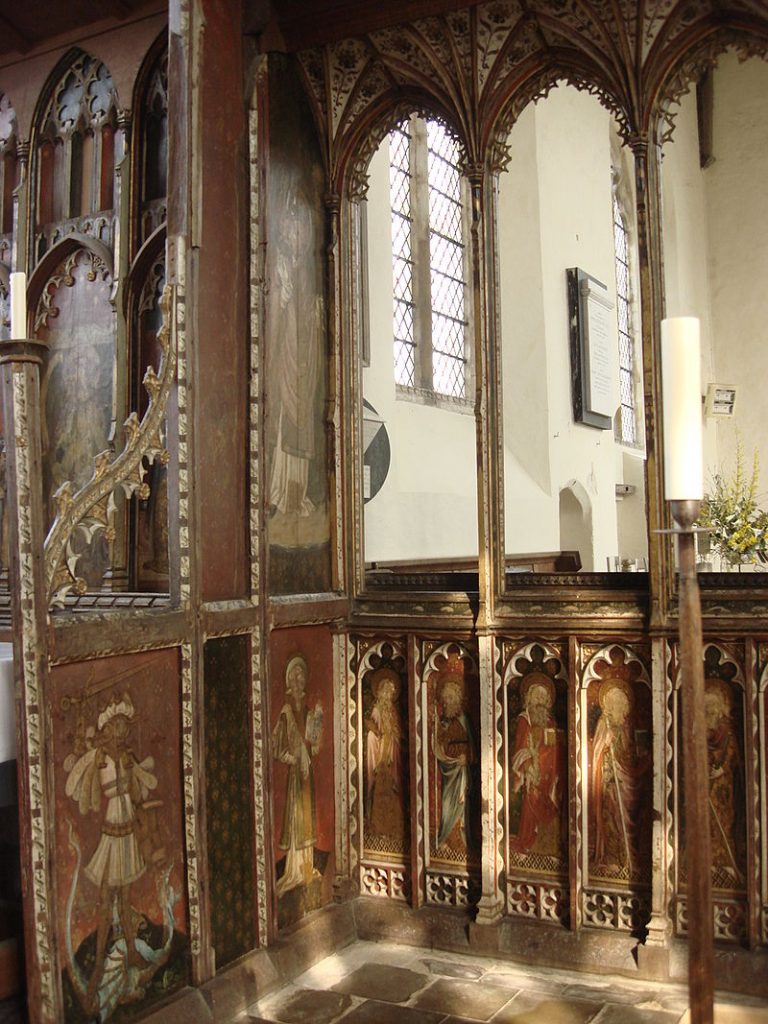
Roodmas is celebrated on May 3rd and September 14th, although the Church of England aligned itself with the Catholic Church’s main celebration on September 14th.
Rood is another word for the Cross. Parish Churches used to have a Rood Screen separating the holy Choir from the more secular Nave. This screen was topped with a statue of the Crucified Jesus nailed to a Rood.
The two dates of Roodmas reflects that it commemorates two events:
The Discovery of the Holy Cross in Jerusalem in 326 by Queen Helena, wife of Constantius Chlorus and mother of Constantine the Great. In Jerusalem, Queen Helena found the Cross with the nails, and the crown of thorns. She authenticated the Cross by placing it in contact with a deathly sick woman who was revived by the touch of Cross. She had most of the Cross sent back to the care of her son, Constantine the Great.
The part of the Holy Cross that was left behind in Jerusalem was taken by Persians but recovered by the Byzantine Emperor Heraclius in 628 in a peace treaty.
Over the years, the Cross was shivered into ever smaller pieces as Emperors, Kings, Queens, Dukes, Counts, Popes, Bishops, Abbots, and Abbesses swapped relics with each other. The fragments were cased in beautiful reliquaries and had enormous power for those of faith and those who could be helped by healing by faith.
The Duke of Buckingham had a piece in his collection, which he kept at York House in the early 17th Century. How he got it, I don’t know, but I think he must have acquired it from the aftermath of the destruction of the Reformation. John Tradescant, who looked after the Duke’s collection (before Buckingham was murdered), had a wonderful collection of curiosities which he kept in the UK’s first Museum in Lambeth. Tradescant’s Ark, as his museum was called, also had a piece of the True Cross. Again, I suspect (without any evidence) that he got it from Buckingham. Did he acquire it after the murder? Or shiver off a timber fragment hoping no one would notice?
The Chapel that Shakespeare’s Father controlled as Bailiff of Stratford on Avon, was dedicated to the Legend of the True Cross, to find out more click here:
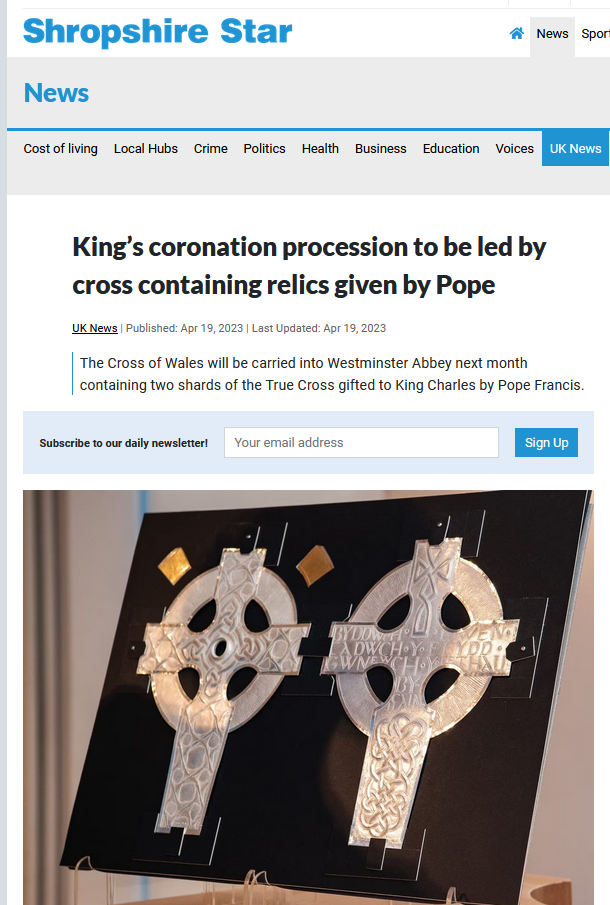
Last year, I was just finishing this piece when I came across this astonishing story in the Shropshire News!
It seems two pieces of the True Cross were given to Charles III by the Pope! They have been put into a cross called the Welsh Cross which took part in the Coronation Procession, and then the King is giving the Cross (I assume with the pieces of the Holy Cross) to the Church in Wales. Let the Shropshire News tell the story:
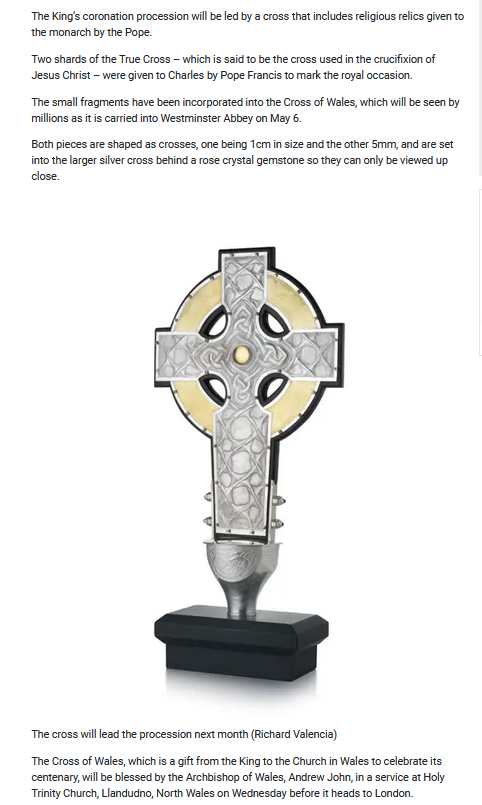
This is quite extraordinarily medieval, and fits in with the news that we were encouraged to take an oath of allegiance to the new King.
I, (Insert full name), do swear that I will be faithful and bear true allegiance to His Majesty King Charles, his heirs and successors, according to law. So help me God.

It is a clear reminder that we are subjects not citizens and news, as a nation, we still set store by superstitions.
First Written on May 3rd 2023, revised May 3rd 2024

